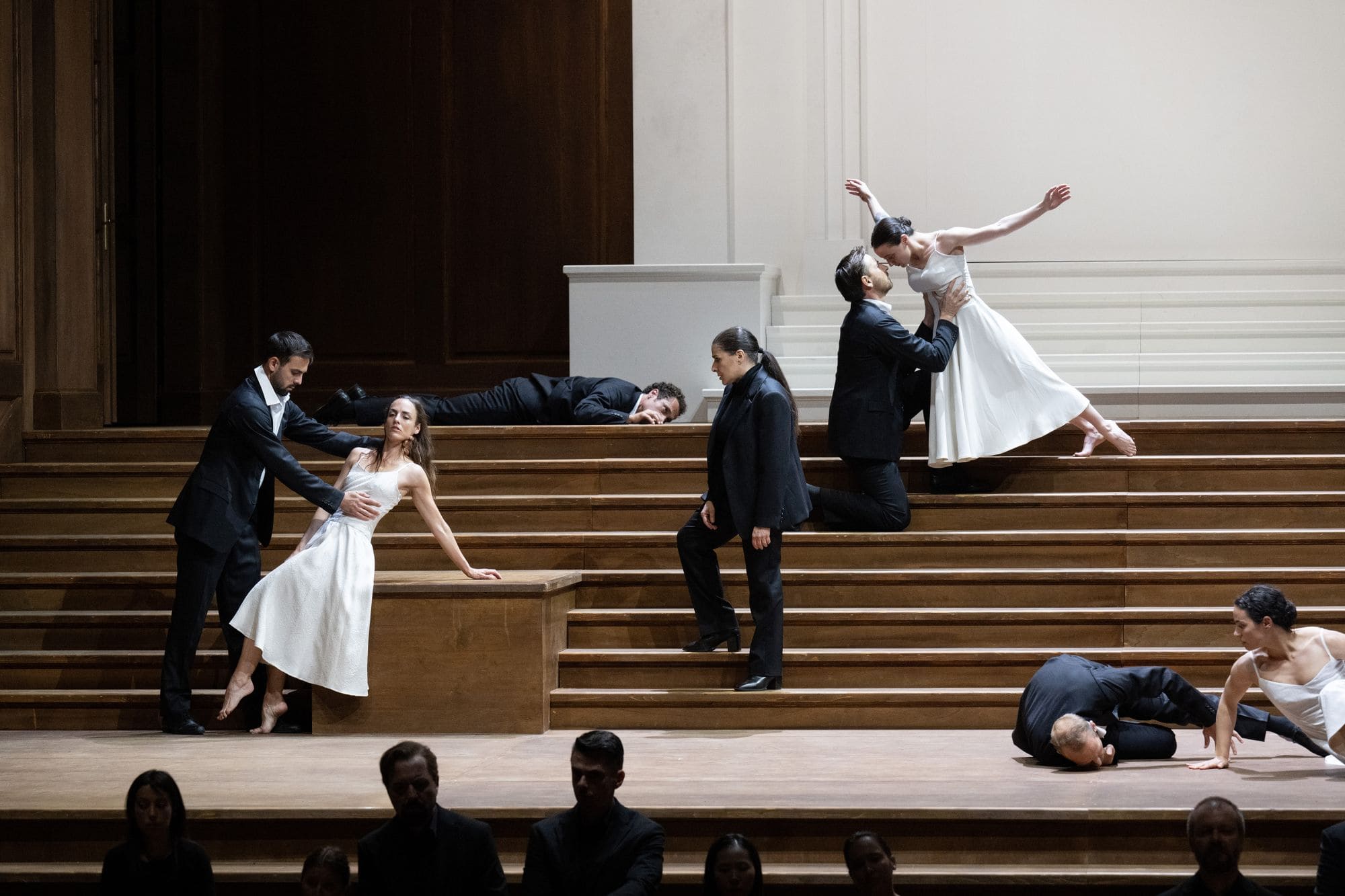
Photo ©Monika Ritterhaus
This year’s Salzburg Whitsun Festival centered on the themes of life, death, and afterlife. Cecilia Bartoli, artistic director since 2012, opened the festival with Christoph Willibald Gluck’s Orfeo ed Euridice (Parma Version) of 1769.
In what appeared a multifaceted symbolist opera-ballet, Bartoli embodied the role of Orpheus in a wonderful Italian interpretation of the gift of tongues at Whitsuntide. In his descent into the underworld and his return to the idyll of union with his beloved Eurydice, Orpheus is more than a mere mortal man. He becomes the likeness of a god.

On opening night, May 26th, Bartoli was awarded Austria’s highest operatic honor, the title of Kammersängerin (chamber singer) by the Austrian government at the end of the performance. The title, historically awarded by kings or princes from the early years of opera (Hofkammersänger), has been bestowed on 127 opera singers since 1971 by the Federal Government of Austria.
Not that Cecilia Bartoli is lacking in such honors already. Artistic director of the Salzburg Whitsun Festival—her contract extends to 2026—she is also a Chevalier de l’Ordre des Arts et des Lettres (France) since 1995, and a Herbert von Karajan Music Prize recipient. She has also served as president of Europa Nostra, the European Voice of Civil Society Committed to Cultural Heritage, since 2022.
From the onset of this year’s Whitsun performance, the azione teatrale presented a splendorous display of symbolism and simplicity onstage. Orfeo ed Euridice consists of a series of scenes that unite aria, chorus, and ballet into a single unit. Johannes’ Leiacker’s stage design allowed for a complex opera-ballet to unfold where Orfeo took center stage literally and musically.
The grandezza of Orfeo’s character was larger than life, like Bartoli herself. Like a modern model of antiquity, she filled the Haus für Mozart with a magnificent personification of Orpheus, from her opening lines to the final scene where she stepped through the door of death after the death of Eurydice.
At one point, Orfeo’s deeds were shown to be of no herculean measure—indeed, something far greater. For what man had gone into the underworld and come back unscathed? Is that not the perfect Whitsuntide message, even if addressed in antiquity by Virgil in Georgics and Ovid in Metamorphoses?
The minimalist stage design gave both stage designer Johannes Leiacker and director Christoph Loy enormous possibilities to develop the scenic essence of the libretto in dance. The first scene opened with a visit by Orfeo and a cast of twelve dancers all in black to Eurydice’s grave, represented by a single quadrant with a rising curtain. Loy’s formulaic repetition of the 8 + 4 sequence for his dancers gave them anonymous freedom to dance out the various scenes, with Orfeo standing apart, accompanied by Madison Nonoa as Amor and Melissa Petit as Eurydice.
Loy’s strongly symbolic choreography—death: black; white: life; color: rebirth; and finally a white-black finale of Orfeo and Eurydice—did rich service to the libretto, as the dancers carried the music and Bartoli, Petit, and Nonoa carried their incredible vocal roles. Loy transposed the rhythmic gestures in a near-perfect mirroring, heightening the dramatic voices to four elements: Orfeo, Amor, Eurydice, and the choir, each with a resounding clarity.
Loy’s choreography addressed the theme of the afterlife in a brilliant and convincing symbolist interpretation. In keeping with it, costuming by Ursula Renzenbrink was an ode to color as a dramatic symbol.
Although Orfeo ed Euridice did not follow the expected triumph of Amor—Orfeo walked through the raised black gate of death after the second death of his beloved—nonetheless conductor Gianluca Capano and Les Musiciens du Prince gave an enlivened performance of Gluck’s masterpiece true to original intentions, closing with the plucking of Orpheus’ lyre.
After receiving several minutes of standing ovations, Cecilia Bartoli was honored by Austria for her outstanding contributions to the Salzburg Whitsun Festival. With this title of Kammersängerin, this wonderful mezzo-soprano joins a roster of operatic superstars including Piotr Beczala, Nathalie Dessay, Juan Diego Florez, Anna Netrebko, and Elina Garanca.